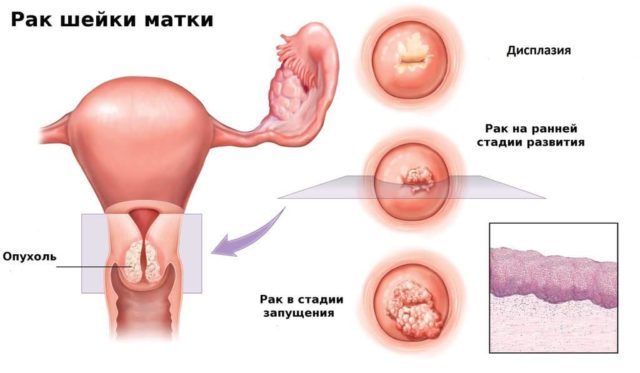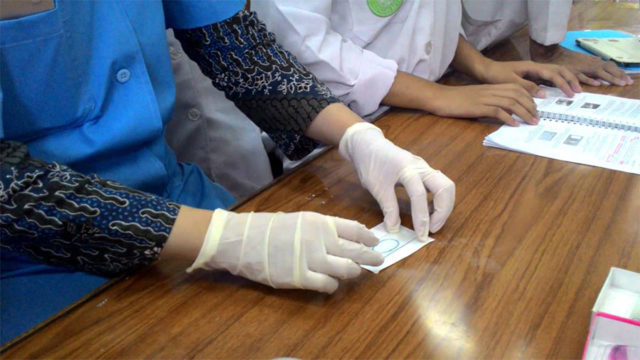Cystoscopy of the bladder in men: a detailed description of the procedure
One of the diagnostic procedures, in which a doctor can obtain information about the condition of the organs of the urinary system, is cystoscopy of the bladder.
A special endoscopic equipment is needed to conduct a study properly. The equipment consists of an optical fiber, as well as the fixture, sometimes used manipulators. The device has a special name - a cystoscope. He looks like a long, narrow tube. The instruments are rigid and flexible.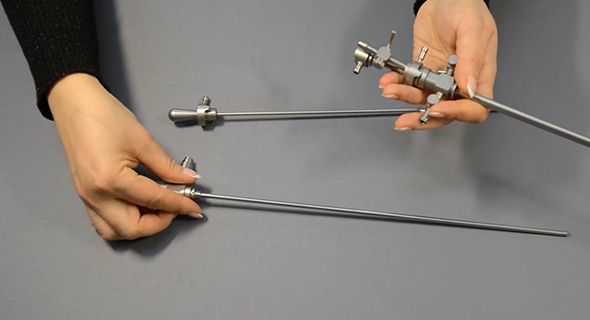
The story of cystoscopy
Since ancient times, scientists were interested to know the location of the structure of organs in man and at the same time without making cuts to the patient. Botstsini light source Italian physician was the discovery in 1805 year, at which the observation of how to operate the urinary tract.
In the years 1877-1879 received an offer from the German urologist Maximilian Nitze to connect the optical device with the instrument light. Device looked into a tube, the end of which was attached to the bulb, this device helped carry out examination of the bladder. The organ of the urinary system should contain fluid. Thus, a study was carried out.
How correctly performed cystoscopy
Investigation agencies come in several forms:
- among them is considered an observation;
- not without catheterization;
- also operating in use.
Preparatory process
To detect the presence of disease urinary organ, cystoscopy should be used. Other methods do not help to identify ulcers or polyps and mucous membrane changes. Due to the method it is possible to detect the appearance of inflammation, where there was bleeding, as well as to diagnose stones, to identify tumors, and even foreign bodies or tuberculosis of the urinary system. The anomaly of the kidneys and urinary tract detected by the survey.
Conducting research
The next step is the introduction of the device into the urinary organ, it should be in the urine. If a patient man found rapid urine and it is not enough organ study carried out after urination pass. The bladder is filled with a special sterile saline in an amount which is necessary for diagnosis.
Inspection of the inner surface of the urethra is carried out after the end of the device will occupy different sides of the bladder body. Thus, we can consider the location of the mouth of the ureter. Method study of the urinary organs is sometimes used for medicinal purposes.
Due cystoscopy removed papilloma cauterize the bleeding vessel or the stent is introduced into the mouth of the ureter. Study contributes detect malignancy portion provided clear picture of the size and the extent of sprouting in the body of the bladder. When the diagnosis is complete the device is removed, the vulva should be wiped and the patient can urinate.
The time of the procedure is considered to be 10-20 minutes. The patient is in the hospital, depending on what the severity of the disease. After investigation, the patient goes home after a couple of hours, if not detected complications. Drawing pain in the urethra are observed after 2 hours after the procedure, as well as expiration of the anesthesia.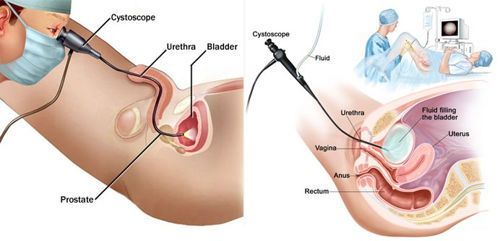
A number of complications
Cystoscopy includes complications as urinary tract have a traumatic injury, or they are infected. Penetration infection entails the inflammatory process in the form of urethritis or cystitis.
If the mucous membrane of the urethra is damaged, delayed urination. This phenomenon affects men who have BPH. At the second bending occurs physiological narrowing of the urinary canal.
Is the pain felt during cystoscopy
To carry out the procedure a special urological hospital. Considered routine and emergency cystoscopy. In this case, training should be minimal.
Before starting the study, the patient should lie on his back and his legs bent at the knees, but dissolve in different directions. During the examination, the doctor should help a nurse. It is necessary to treat the vulva using antiseptics.
Pipette or syringe can enter the urethra anesthetic for local anesthesia. After that, the patient will not feel pain. Insert a cystoscope into the urinary channel is necessary after the application of anesthesia. Today, experts use a flexible cystoscope, it looks like a narrow tube. The study is an invasive activity, so cystoscope must be pre-sterilized. For storage of the device there is a special package, it should be open before the manipulation.
After a quick introduction of the doctor starts to treat the urethra lighting device, and an optical fiber. During this study assesses the body of cross-country, as well as the condition of the urethral wall.
In some cases, the procedure is carried out
When violations of the urinary system is recommended to perform a cystoscopy of the bladder and urethra. In men, it is necessary to conduct research in the following cases:
- upon detection of chronic cystitis, as well as inflammation of the bladder;
- if there urolithiasis;
- the detection of urinary incontinence that appears overactive bladder;
- when urination occurs for unknown reasons;
- if there pain in the lumbar region;
- at the appearance of blood or pus in the urine;
- in the lower back pain are observed;
- Bladder tumors detected.
Cystoscopy performed only by a physician who is responsible for the patient's condition and prescribes the treatment of him.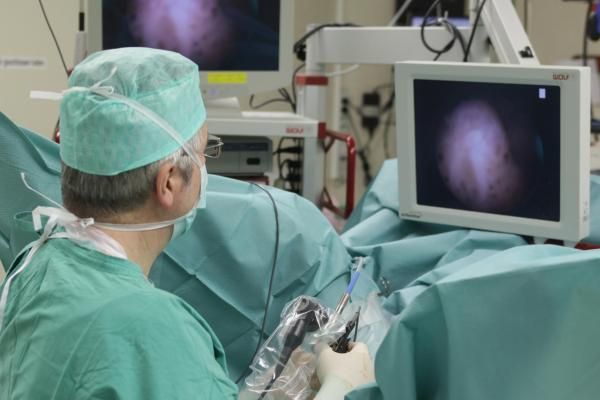
The presence of indications to study
Among the major indications identified a number of the following:
- If detected in the urine of blood impurities;
- urination is not stable;
- after analysis in urine revealed a large number of leukocytes;
- bladder has foreign bodies, tumors or malformations were found.
Upon detection of acute pain in the stomach necessary to cystochromoscopy. It allows you to get rid of colic, as well as to eliminate the disease organs in the abdomen.
The procedure is not carried out at contraindications
The presence of acute inflammatory diseases do not allow cystoscopy:
- if the bladder or urethra revealed inflammatory changes;
- prostatitis presence or orchiepididymitis or orchitis;
- the detection of obstruction of the urethra;
- if urethra Injured;
- upon detection of casts containing fluid into the ureter.
In optical instruments, as well as the computer is not visible transparency due to the presence of blood in urine or urine due located in pus-containing liquid. Before inspection should be washed bubble. Research is not obtained at low bladder capacity.
It is worth paying attention!
Distort the overall picture, as well as the results of the study can be taken medicinal drugs. cystoscopy process will be disturbed by the influence of drugs, there may be the possibility of complications. Among the observed reception means dipyrone, anticoagulants, analgesics and anti-inflammatory agents.
How to conduct research
Before starting to carry out the procedure, the patient must enter painkillers or general anesthesia is administered. Before you begin to carry out the manipulation, it is necessary that the bladder was empty.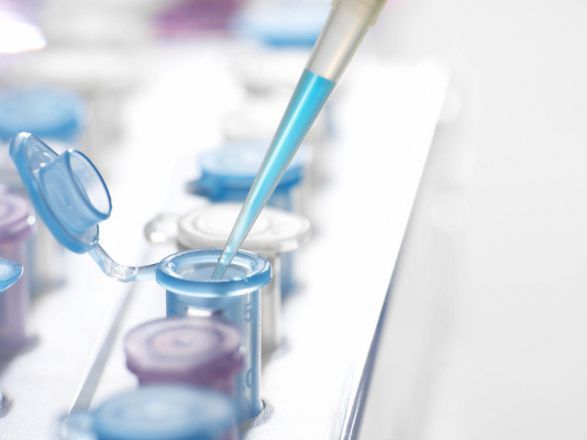
Action must be met
- At the urology chair need to be back down, legs raised and bent.
- Before you begin an introduction, it is necessary to lubricate the device sterile glycerol, and then enter the urinary organ.
- The urinary organs should not be liquid.
- Furatsilina solution warmed to 36.6 degrees, and then wash the body.
- Body should be filled with medication, as long as the patient does not want to help.
- All the walls and the mouth of the ureter should be checked.
The conclusion is provided in the event that revealed the presence of ureteral forms in the mucous membrane color, identified tumors, if there is an ulcer, calculi and foreign bodies.
It is normal to feel a smooth mucous membrane, which has a capillary vascular network. If absent the pale pink color, and the mouths of the purulent contents released or blood can then determine the nature and location of the pathology.
How patients tolerate the procedure
Within 2-3 days, the patient may feel discomfort and a burning sensation during urination.
The presence of undesirable effects:
- Blood in the urine is observed after the study;
- for urinary tract infection is propagated;
- erection temporarily disrupted;
- decreased sexual desire;
- on the urethral mucosa, as well as the erosion of the urinary organ appears;
- a gap urethral wall;
- mucous membrane is punctured;
- blood clots overlap lumen and therefore, the urine zederzhivaetsya;
- on painkillers manifests an allergic reaction.
Rarely seen complications. The consequences are revealed at a time, then disappear on their own. If you do not disappear in the near future changes, it is necessary to ask for help to a specialist who is conducting a study.
The presence of symptoms required for immediate treatment to the doctor
- the emergence of severe pain;
- bleeding does not stop, and stand out clots;
- urination was detained;
- allocated urine comes out in small amounts;
- body temperature rises and falls;
- impaired sexual function, and there is no desire for the partner.
Correction eliminates the symptoms with medication and surgery.
The patient's condition after cystoscopy
After investigation, the patient feels a number of these unpleasant feelings, which should gradually disappear:
- bladder observed occurrence cramps. Drunk liquid in large quantities will help get rid of the unpleasant symptoms;
- urination is frequent;
- urine can be trapped and not go out of the body in time;
- in the lower back, pain;
- Body temperature is increased and accompanied by chills;
- during the first few days, there is the appearance of blood in the urine.
See also:What if there is no ejaculation: medical advice
Traumatic injuries of the urethra in men of advanced age, in the presence of prostate adenoma. This manipulation must be explained to the patient. He must know the consequences. The procedure should be performed after the patient's consent. Therefore it is necessary to require a doctor who sends the study, a detailed explanation of the procedure.
When is?
The procedure can be administered at any age and is the main method of diagnosis for some diseases of the genitourinary system, when safer Research methods (ultrasound, radiation, magnetic resonance imaging) do not provide the necessary information, and if necessary taking for histological examination Biomaterial of the foci of inflammation / tumors, foreign bodies (getting samples of urinary stones in order to clarify their structure to assign the correct treatment and diet). Upon detection of calculi (stones) are small structures can be destroyed and removed through an endoscope, polyps - are removed and sent for analysis.
In the presence of ulcerative lesions of the mucous membrane can be made electrocautery (burning) the damaged areas.
May receive each discharge ureter to assess renal function, inflammation diagnostics (infectious or autoimmune, unilateral or bilateral). This is particularly important when planning an operation to remove a kidney when the functional state of the rest will play a crucial role.
When tumors and inflammatory diseases of the prostate bladder cystography men will help determine prevalence of process of the surrounding tissue, the degree and nature of involvement of the bladder and urethra pathological process.
Indications:
- Cystitis and urethritis - pain, burning during urination, and cramps in the area of lumbosacral spine pain, frequent urge to the bathroom with small portions of urine
- Bladder cancer - symptoms similar to cystitis, but the study of smear from the urethra or urine were found atypical cells
- Prostatitis, prostate adenoma and adenocarcinoma - frequent urination, sense of incomplete emptying of the bladder, incontinence / urinary retention, nocturia (frequent nocturnal desires in a toilet)
- Sexual dysfunction in men (male fertility) - to assess the condition of the seed tubercle
- Suspected urolithiasis with the localization of the stones in the bladder - pain and cramps in the lower abdomen, painful urination difficulty in small portions, insufficient emptying bladder sensation, blurred urine to a whitish hue, in urine salt crystals (Crystalluria)
- Enuresis - bedwetting (urination occurs during sleep) in the absence of mental and neurological pathologies
- Pyuria - pus in the urine (in the appearance of the liquid foreign light clot turbidity)
- Hematuria - blood in the urine (change of color and transparency of the liquid, the occurrence of bleeding clots) in the absence of injury
- Anomalies of the urogenital system, or their suspected - to estimate the volume and shape of the reservoir and the urinary tract
- Evaluating the effectiveness of treatment
Contraindications
Contraindications mean that cystoscopy in these cases only shown at uninformative other methods.
- Acute inflammation of the bladder (acute cystitis), urethra (urethritis acute), prostate (Acute prostatitis), the testis (acute orchitis) - in men, uterus and appendages - in women in the period fever
- Bleeding from the urethra of unknown etiology
- urethra and bladder injury
- Hemostatic disorders (hemophilia)
- Pregnancy
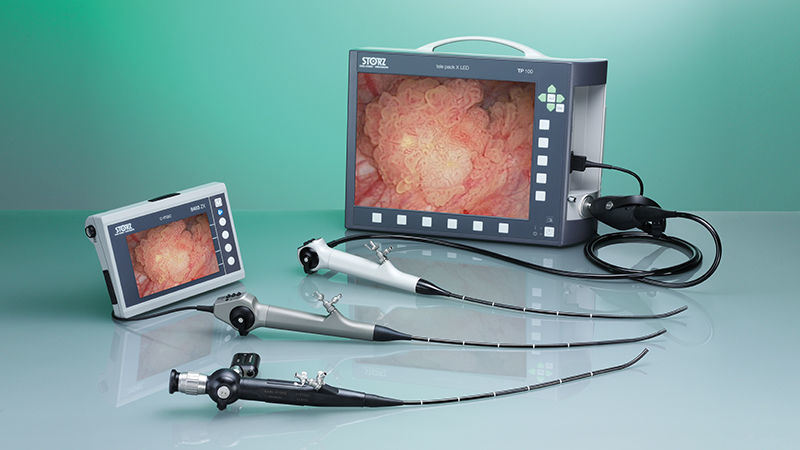
cystoscopy treatment
Despite the fact that cystoscopy is a diagnostic procedure, with its help, as well as with the help of almost all endoscopic studies, can produce some therapeutic manipulation:
- Crushing and removal of small stones
- Removal of polyps and small tumors with their further study with simultaneous coagulation wound surfaces
- Coagulation wiped away erosions and ulcers, bladder
- Removing the clots or foreign bodies and restoring patency of urinary tract obstruction when blood, pus or small concrements
- Introduction of medicinal solutions, washing bladder and urethra (the washings were also collected for analysis)
How to prepare?
- Cystoscopy anesthetized require early (10-12 hours before), refusal of food and fluids reception (3-4 hours), after the procedure will take time to come in itself, it is not recommended to use private transport and engage in activities requiring concentration of potentially dangerous activities attention.
- Cystoscopy without anesthesia It does not require any special training: it is enough to arrive on an empty stomach, having made toilet genitals before leaving the house. Before the procedure to empty the bladder.
Select the type of anesthesia will depend on the evidence: cystoscopy under anesthesia or "dream" shows excitable or mentally unstable patients. Anesthesia can be both general and spinal (sensitivity loses only the lower half of the body, from the waist, consciousness is retained).
Since the structure of the male urethra is somewhat more complicated (it is up to 6 times longer than the female), for cystoscopy in men often recommend spinal or general anesthesia to eliminate pain sensations. Also anesthesia may be recommended if the expected duration of the examination, the removal of multiple tumors or if the subject has a small bubble (150 ml or less) capacity.
How is the procedure
- Before starting the diagnostics examinee issued sterile gown, and it is asked to lie down on the strip on the couch back, knees bent, explain how the study will be held and what sensations at the same time any
- External genitalia are treated with antiseptic solutions, the endoscope is lubricated with glycerin to improve sliding. Men anesthetic injected into the urethra using a syringe with a rubber tube and a clamp held prior to the analgesic action (about 10 minutes)
Procedure technique will vary depending on the type of tool. Allocate rigid and flexible endoscopes.
-
rigid endoscopy bladder is carried out by the hard endoscope on a long (30 cm) of the metal tube. Such an endoscope is well tissue spreads, simplifying inspection, however, is more traumatic and delivers more discomfort the subject, particularly men. Rigid endoscope does not apply in the presence of large tumors of the pelvic organs, pregnancy. When rigid cystoscopy is introduced into the urethra tube of the endoscope and the fluid supplied to the bladder, which simultaneously flushes it spreads and folds of the mucosa, improving the visualization.
To summarize and liquid discharge tube of the endoscope is connected to a two-way valve, as the presence in the cavity of pus or blood, opacifying medium body before inspection would need to rinse. The washings were collected for analysis
- flexible endoscopy It uses a flexible endoscope - a movable thin tube of a polymeric material with optics and a lamp at the end. The device follows the curves of the body and therefore it can easily penetrate into hard to reach places, which makes inspection quite informative. This method helps to minimize injuries and negate the pain during the procedure. In modern diagnostics flexible cystoscopy is gradually replacing the rigid
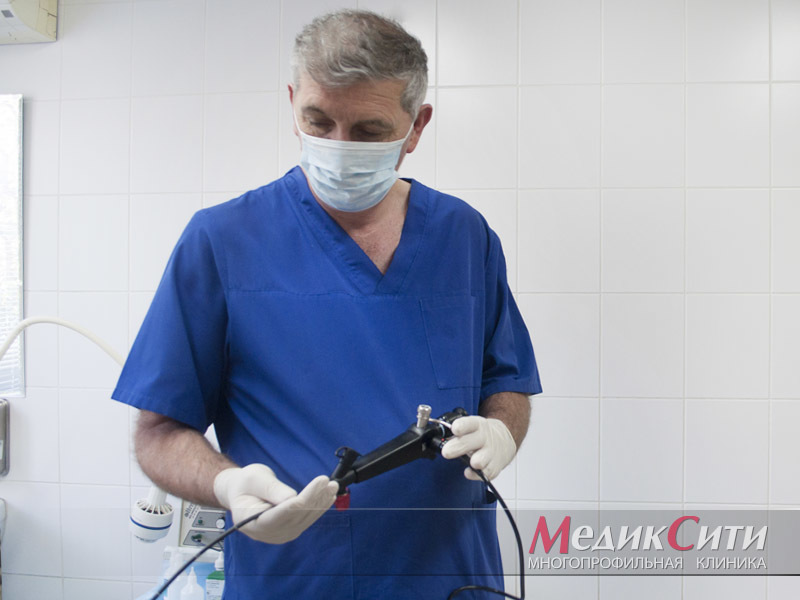 |
Cystoscopy different patients
- Cystoscopy of the bladder in men. The urethra of men in length from 17 to 22 cm, so inspection requires special care and experience of the endoscopist, particularly during the introduction of the instrument. During the procedure in the operating room should always be an anesthesiologist, who can anesthetize a patient in the event in addition to severe pain during the procedure.
Children cystoscopy of the bladder is held only children's flexible endoscope, which is significantly thinner than an adult, and only an experienced diagnostician pediatric.
The consequences of the procedure
Upon termination of the anesthetic, patients usually experience mild discomfort and burning in urinary tract, worse when urinating (especially after cystoscopy in men), frequent urge to restroom. After applying the hard endoscope can be released light pink slime. To reduce pain recommended to increase the amount of consumed liquid (which in turn reduce the concentration of urine) to apply an anesthetic dose.
If symptoms persist for three days or they are joined by the selection of fresh blood, chills, fever - it is necessary to return immediately to the hospital or call a doctor.
The advantages of the procedure in MEDSI:
- With the high reputation of the clinic doctors, cystoscopy price at an average cost of services in private clinics in Moscow
- territorial accessibility
- The opportunity to conduct a survey and get expert advice in the same branch before and after the procedure
- Prevention and control of complications, hospitalization at the request of or on the testimony in the hospital clinic
- Veteran analysts with great experience, the availability of pediatric specialists
- Diplomatic personnel, technically and friendly service
https://medsi.ru/articles/tsistoskopiya-chto-eto-takoe-podgotovka-kak-delaetsya-protivopokazaniya/
types cystoscope
Cystoscope can be tough and flexible. This long, thin tool hollow inside. It has an optical mirror system. It transmits the image to the monitor. Also cystoscope equipped with lighting lamps improve visibility.
If necessary, the inner tube cystoscope is used to deliver drugs directly to the mucous membrane of the bubble, the introduction of saline body to improve visibility, remove excess urine. Also by means of this device and the cutting loop is possible to cauterize the tumor and ulcer and take tissue samples for analysis.
Depending on the destination cystoscopes are operating, catheterization, inspection, universal and special.
Operating cystoscopes used during therapeutic procedures in conjunction with the semi-rigid surgical instruments.
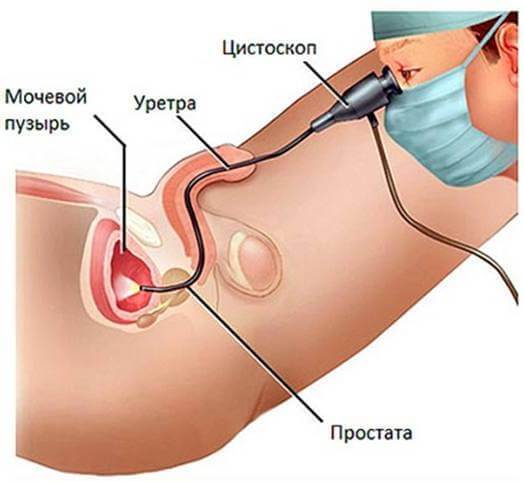
Through uretercystoscope ureters to catheters.
For washing and inspection of the bladder is viewing cystoscope.
TO special cystoscopy include children cystoscopy, and tsistorezektoskopy lithotriptoscope.
children's cystoscope is small in diameter and are used for the examination and treatment of children.
Tsistorezektoskopom, the following therapeutic manipulation: resection of the prostate, if it is struck with cancer or adenoma; resection of tumors and papillomas of the bladder via the high-frequency current at the visual control; transurethral resection of the affected bladder neck sclerosis.
Through lithotriptoscope held mechanical crushing of stones that are in the bladder.
Indications for cystoscopy
- Cystoscopy of the bladder is held in the following cases:
- frequent or painful urination (eg, urinary incontinence in men);
- the presence of pus in the urine or blood;
- pain in the pelvic organs of unknown etiology;
- often occurring cystitis;
- suspicion of infectious diseases of the urinary system;
- a suspicion of prostate tumors;
- suspicion of the formation of stones in the urinary tract.
Contraindications to cystoscopy
Carrying cystoscopy is strictly forbidden in the presence of inflammation in the bladder, urinary tract, prostate or testis, suspected bleeding when urethral fever, in case of problems with the urethra (its damage, obstruction).
Preparations for cystoscopy
Follow the diet prior to cystoscopy is required. There is only one prohibition: do not eat on the day of the procedure.
It is also advised to refrain from urinating hour before the examination. Men should carry out a cleansing enema 1-2 hours. The physician should inform the patient about the risk of complications. The patient should be sure to sign a consent for the procedure. Cystoscopy is performed only under the following conditions: in the absence of urethral inflammation that can impede the passage of the cystoscope; content of at least 80-100 ml of fluid in the bladder; no inclusions of pus and blood, the transparency of the patient's urine. Carrying cystoscopy of the bladder in men is associated with a greater risk than females. The reason is that the urethral canal in women is much shorter. Also, this procedure gives men more pain. Therefore cystoscopy in men is performed under local anesthesia.
Carrying cystoscopy of the bladder in men
Stages of a cystoscopy of the bladder in men:
- The doctor lifts the patient's penis and introduces the cystoscope edge in the opening of the urethra.
- Under its own weight the device is lowered to the urethral sphincter.
- The doctor puts the penis down, keeping the unit in an inclined state. Through this tube moves to the back of the urethra.
In the presence of adenomas doctor bends down cystoscope and propels him forward. It is forbidden to make further efforts to advance the instrument through the urethra, as this may lead to a false stroke or rupture of the urethra. Cystoscope in the study of the urinary system in men goes a long way: traverses the prostate, moving past the seed tubercle and bladder neck.
Before cystoscopy man should undergo some training. This will help to minimize the risk of complications.
- Carry out a general and biochemical analysis of urine. This will give a more complete clinical picture.
- Explore the clotting of blood.
- Make urethral radiography.
The last meal before cystoscopy under general anesthesia should be 8 hours before the test. To prevent possible ingress of hairs with the cystoscope into the urethra, the man should shave the hair from the groin and external genitalia. Also before the procedure necessarily conducted hygiene, prevent infection from outside the urinary tract.
Complications after cystoscopy
After the cystoscopy may experience certain complications.
- The presence of blood in urine. They usually disappear within a couple of days.
- The feeling of pain and burning sensation when urinating. They disappear on their own within a few days.
- Development of cystitis. This is the result of infection during cystoscopy. Quite often a complication arises from the lack of hygiene of the external genital organs.
- Perforation (puncture) the bladder. This occurs inexperienced doctors. For example, the doctor collected histological material is too long needle. The symptoms of this are the long-term severe pain, blood in the urine, reducing its quantity, chills, fever.
- Damage to the urethra. This complication - one of the most serious. It leads to the formation of a false move. For the treatment resorted to installing cystostomy. Under this system, urine is diverted into a special container attached. It is removed after the restoration of normal urination.
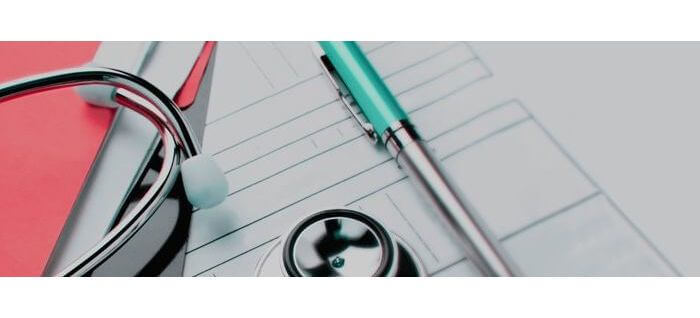
If the patient is not troubled by negative symptoms after cystoscopy procedure, he can return to the normal rhythm of life in the shortest possible time.
cystochromoscopy
To make a diagnosis of kidney function, doctors have resorted to a particular type of cystoscopy - cystochromoscopy. The patient previously contrast agent is administered intravenously. After that, the doctor will determine the speed and time allocation colored urine ureter each separately. Normally, this result is 3-5 minutes. If the selection is delayed up to 10 minutes, you should talk about violations in the functioning of the kidneys.
The use of cystoscopy in the treatment of urinary system diseases
Cystoscopy allows you to perform the following treatments:
- stop the bleeding;
- remove benign and malignant tumors in the bladder;
- hold plucked biopsy;
- break up and remove the stones;
- put ureteral catheters;
- cut urethral stricture and the mouth of the ureter;
- remove the obstruction of the bladder.
http://ecs-spb.com/articles/kak-provoditsya-tsistoskopiya-u-muzhchin/
The history of occurrence of cystoscopy of the bladder
Even in ancient times, scientists have dreamed about, to be able to see the internal structure of organs, without cutting the patient. Botstsini Italian physician in 1805 discovered how to use the light source can watch the work of the urinary tract.
German urologist Maximilian Nitze in the 1877-79 biennium. He proposed to combine in one device the light and the optical device. Device, which is a tube with an inner end attached to the bulb, carried into the bladder. Then, the bladder was filled with liquid.
It is possible to carry out a study of the bladder is much easier and more accurate.
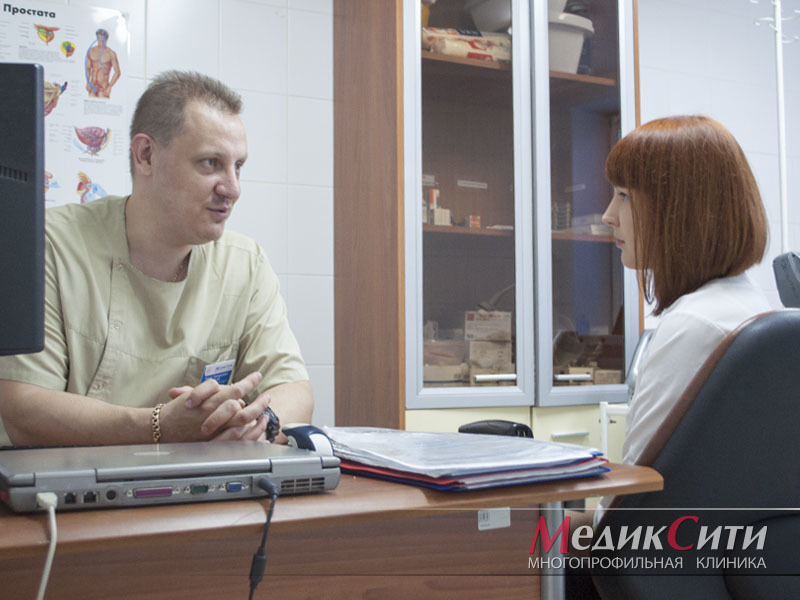 |
Cystoscopy of the bladder. Kinds.
According to the method of examination of the bladder is divided into the following types of cystoscopy:
- lookout;
- Catheter;
- operating.
Preparation for cystoscopy
Preparation for cystoscopy is proper hygiene of sex organs, which reduces the number of complications. Therefore, the physician treats the patient's genitals with antiseptic immediately prior to the procedure of investigating the bladder.
Carrying cystoscopy
Lookout cystoscopy of the bladder - one of the most common surveys. For this type of cystoscopy resort in cases where the information obtained by ultrasound or CT scan of the bladder bladder, not enough to make a diagnosis. Cystoscopy of the bladder in women goes much easier than men, because they are shorter and wider than the urethra.
Cystoscopy of the bladder in men because their urethra is much longer, performed under general anesthesia. For women in this case it is used local anesthesia.
Cystoscopy of the bladder is most often performed in the supine position in the urology chair or a special table with footrests. When the legs or pelvic lesions cystoscopy is performed in the lateral position.
Before starting the study for analgesia bladder into the urethra is introduced warm solution novocaine or lidocaine or other anesthetic gel. Sometimes allowed to drink analgesics.
For a better passage of the end of the cystoscope processed glycerine or petroleum jelly and carefully inserted through the urethra. Once the device reaches the bladder body is removed from the residual urine to the measurement of its volume. Next, the bladder capacity by filling its volume furatsilina solution. Typically, about 200 ml of solution. When the bladder contains blood or pus, it is vesicoclysis before cystoscopy.
Cystoscopy observed and the top wall of the bladder, then the left and right side walls, rear wall and bottom. Cystoscopy was performed to determine the presence of ulcers, stones and foreign bodies in the urinary bladder, to evaluate the nature of the available selections.
Cystoscopy of the bladder in women sometimes carried out with cystochromoscopy. For this kind of investigation is administered intravenously 0.4% indigo carmine solution and checked for what time it is excreted in the urine.
If necessary, during cystoscopy, biopsy of the bladder.
When operating cystoscopy of the bladder in women held uretromiya, removal of tumors of the bladder, catheter is installed in the ureter.
In the presence of urethral stricture in men, probing is carried out (extension of the urethra) or uretromiya.
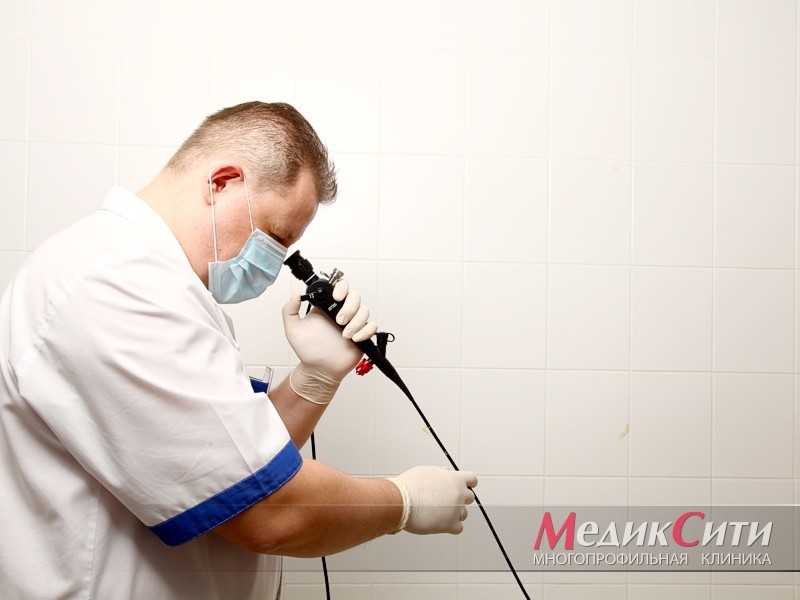 |
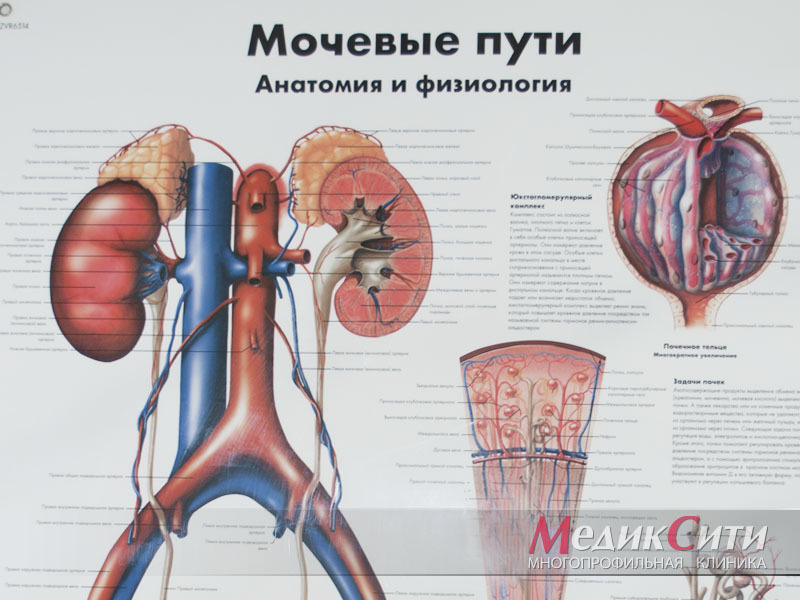 |
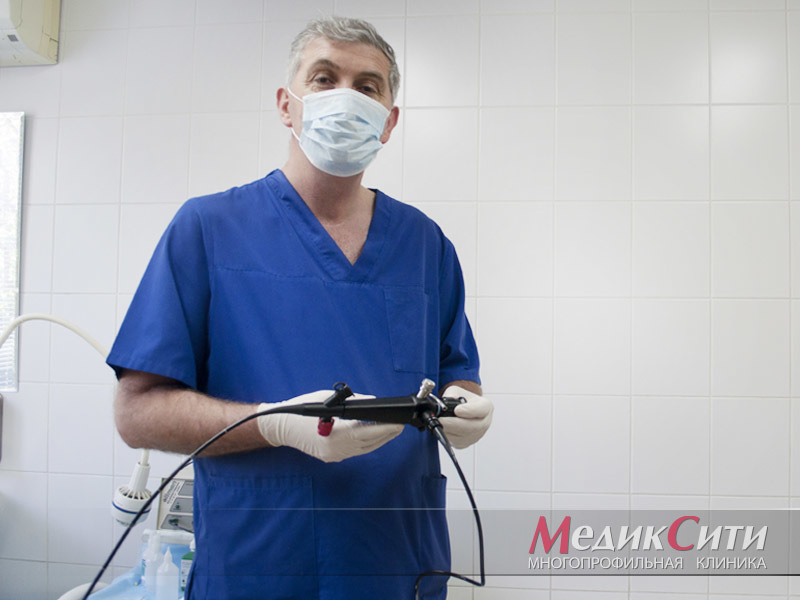 |
Diseases of the bladder, which is shown at cystoscopy
Carrying cystoscopy is shown in the following diseases:
- cystitis;
- tuberculosis;
- urination disorders;
- hematuria (using cystoscopy can be seen in what area of the bladder is bleeding);
- suspected urolithiasis;
- fistula into the vagina and the bladder;
- presence of abnormal cells in the urine samples;
- BPH;
- malignant and benign bladder and urethra;
- injury of the bladder (with the help of research you can find out the character of the area and the mucous membrane of bladder ruptures);
- suspicion for the presence of a foreign body in the bladder (bladder cystoscopy) helps to precisely determine the size and location of the foreign body and to determine a treatment regimen.
Contraindications for cystoscopy
Contraindications are divided into general and local.
local contraindications
Cystoscopy is not carried out in the presence of inflammation and blood in the urine. In this case, cystoscopy of the bladder can lead to even more inflammation.
General contraindications:
- renal failure;
- myocardial infarction;
- pregnancy.
Complications after cystoscopy
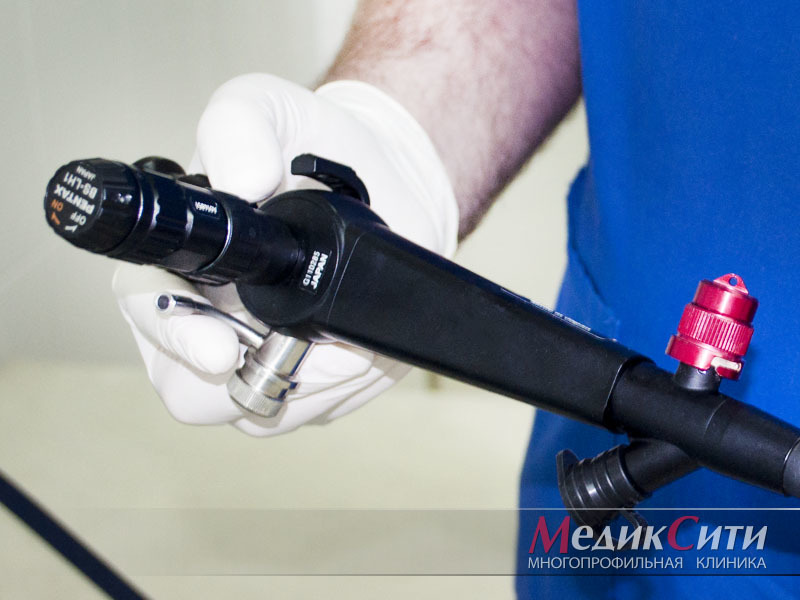 |
When unprofessional made cystoscopy following complications may occur:
- infection in the bladder cavity;
- occurrence of cystitis of the bladder or erosion;
- traumatic complications (urethral ruptures occur during cystoscopy in men);
- bladder perforation (puncture of the bladder wall, accompanied by the outflow of urine).
In order not to get nasty disease of the bladder, cystoscopy should be performed only in a well-established medical clinic!
after cystoscopy
After cystoscopy following discomfort (which pass with time) can be observed:
- cramps and burning sensation in the bladder (to reduce these symptoms, it is recommended to drink plenty of fluids);
- frequent urination;
- urinary retention;
- lower back pain;
- chills, fever;
- bleeding in the urine (should be gone a couple of days).
If the selection does not disappear within 2 days after cystoscopy, you should immediately consult a urologist.
https://www.mediccity.ru/directions/550
What does the cystoscopy?
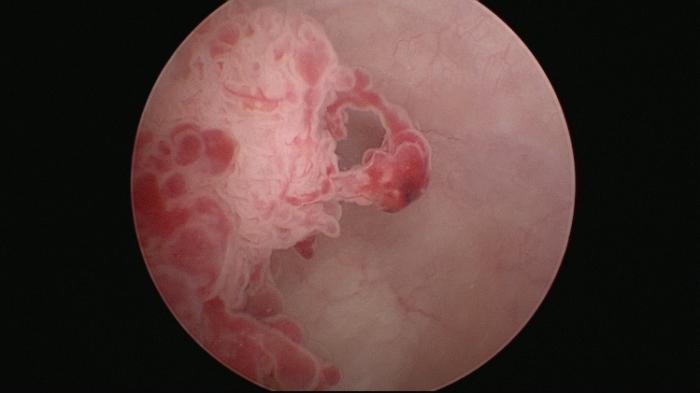
During cystoscopy endosokpist inspects the lower urinary tract with a special research unit - a cystoscope. Thanks to this device the doctor can see the lower urinary tract through the urethra. It is possible to identify and assess the narrowing of the urethra, prostatic hypertrophy (Prostate), changes in the functional abilities of urinary sphincter, to identify tumors or stones in the urinary bubble. If necessary, use of anesthesia in the survey also slight surgical intervention.
Indications for cystoscopy
- Repeated complaints during urination.
- Detection of blood in a urine study (in the absence of urinary tract infection). If there is no urinary tract infections in humans, but found visible blood in the urine - even if it was only one time - it is imperative to perform a cystoscopy to determine the cause of this "painless gross hematuria "
- If you suspect that a tumor in the lower urinary tract cystoscopy can give confidence in the diagnosis.
- In men, the prostate gland is located just below the bladder. If it is clearly increased, the doctor can find out indirectly by a narrowing of the urethra.
In addition, doctors use cystoscopy in order to find out the causes of pathology emptying of the bladder.
Contraindications to cystoscopy
Under certain circumstances, it is impossible to carry out cystoscopy. For example, when ostromtsistite, acute inflammation of the urethra or prostate is Study contraindicated, since the introduction of the cystoscope is an additional traumatic factor mucous. Therefore, before each study must be checked urine, handing it to the test to rule out urinary tract infection. it is necessary to find out the reaction to contrast agent before cystochromoscopy. Pregnancy is also a contraindication to cystoscopy. From general contraindication can distinguish a myocardial infarction, renal and hepatic failure, acute cerebral circulatory disorders.
Indications for diagnostic cystoscopy
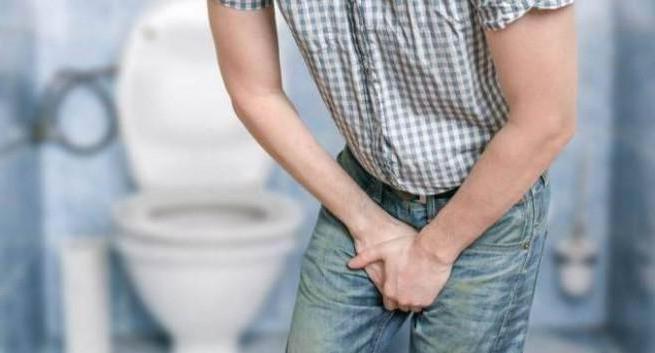
Cystoscopy primarily serves for the diagnosis of lower urinary tract diseases. Due cystoscopy doctor can ascertain narrowing of the urethra (urethral stricture), dysfunction sphincter of the bladder, prostatic hypertrophy in men (prostate hyperplasia) or detect bladder stones bubble. When cystochromoscopy patient administered a contrast agent through a vein. The doctor observes, when a colored urine from the ureters. If the kidneys amazed the urine from the ureter on the affected side is delayed or absent.
What does the diagnostic cystoscopy?
Some examples of diseases that can be set using cystoscopy:
- tumor (cancer), bladder;
- constriction of the urethra due to scarring (strictures);
- bladder diverticula (protrusion of the bladder wall);
- fistulas bladder (compound from the bladder into other organs or outwards);
- bladder stones;
- foreign body in the urinary tract;
- changes sphincter function;
- mucositis;
- anatomical changes of the urinary tract.
Moreover, in men the path from the urethra to the bladder, the prostate is called doctors prostate. It surrounds the urethra. Enlarged prostate is often narrows the urethra and causes problems with urination. This narrowing of the urethra can be detected by diagnostic cystoscopy.
However, cystoscopy may be not only a diagnostic (ie, serve not only for diagnostic purposes), but it also It can be used to treat lower urinary tract disorders and for monitoring the results of bladder tumors with bubble. For example, during a cystoscopy may be disposed of superficial tumors of the bladder, foreign bodies or bladder stones, and also can be decreased prostate gland.
Preparing the patient for Cystoscopy
How to prepare for the investigation procedure of the bladder (cystoscopy)?
- Psychological preparation. The patient should understand the need for this manipulation. Typically, a cystoscopy is performed under local anesthesia, so the procedure although not very nice, but quite painless. Sometimes after cystoscopy, the patient may complain of a burning sensation when urinating, but this phenomenon quickly.
- Hygiene of genitals. Before the procedure is necessary to qualitatively undercut. We remind you that women should be carried out cleaning the movement from top to bottom, and men should carefully handle the opening of the urethra, pushing back the foreskin.
- Emptying of the bladder. Empty your bladder before the test is not required. If evacuation occurred, the doctor will fill the bladder prepared solution.
How is cystoscopy?
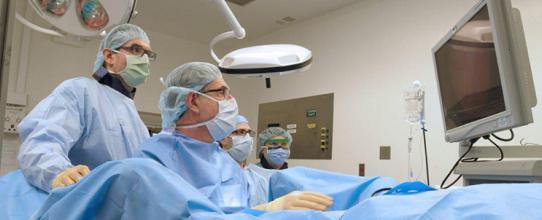
In most cases, diagnosis is carried out on an outpatient basis: this means that the patient after the examination in a hospital or in a private doctor's office can go home.
If during cystoscopy performed surgery, in most cases it is necessary anesthesia and hospital stay.
The rest of cystoscopy is almost always sufficient local anesthesia (local anesthesia). For this local anesthesia, the doctor inserts into the urethra with an anesthetic gel, which provides a better sliding effect during the passage of a cystoscope. Used for research Cystoscopes are either rigid or flexible. Today's generation of flexible devices makes it possible to conduct a careful and painless study and also in men.
Cystoscopy technique - algorithm of actions
- Preliminary preparation of the patient for Cystoscopy.
- The correct position (flat on the back with divorced feet).
- Careful treatment of the urethral opening.
- The introduction of the anesthetic gel into the urethra.
- Promoting a cystoscope through the urethra to the bladder.
- Filling fluid for bladder puzyryaspetsialnoy unfolding of the folds of the mucosa. It becomes clearly visible to the study.
- Careful removal of the device after the doctor finishes cystoscopy.
- Bed rest, which should be observed for 2 hours after the study.
- Excessive drinking after an investigation, if there are no contraindications.
Complications and consequences cystoscopy
In rare cases, complications can develop during cystoscopy. In connection with the study of the effects of the following may occur:
- urinary tract infections;
- inflammation of the prostate, or kidney;
- urethral injury, the sphincter or bladder;
- bleeding;
- some patients may experience a temporary urinary incontinence, and pain when urinating.
urinary tract infections as a consequence of cystoscopy
Despite the desire for the greatest possible sterility in the course of research, it remains a risk that in the study of the urinary tract pathogens fall outside diseases. To prevent infection, after the intervention is useful to drink a lot, if there are no medical reasons against it. Thus, the bacteria will be washed away in a natural way.
In certain metabolic diseases - such as diabetes - increased susceptibility to infection. Therefore, in order to prevent infection, diabetics and patients belonging to other groups at risk, often preventively obtained during cystoscopy any antibiotic.
Pain and blood in the urine after cystoscopy
After researching all the consequences of patients often complain that after cystoscopy sick to go to the toilet, there is a burning sensation when urinating and (or) there is a small amount of blood in the urine. In most cases these symptoms are harmless and are explained only by mechanical stimulation. Then they disappear quickly on their own.
https://www.wp-german-med.ru/sovremennaia-endoskopia/1797-tsistoskopiya-kak-provoditsya.html


